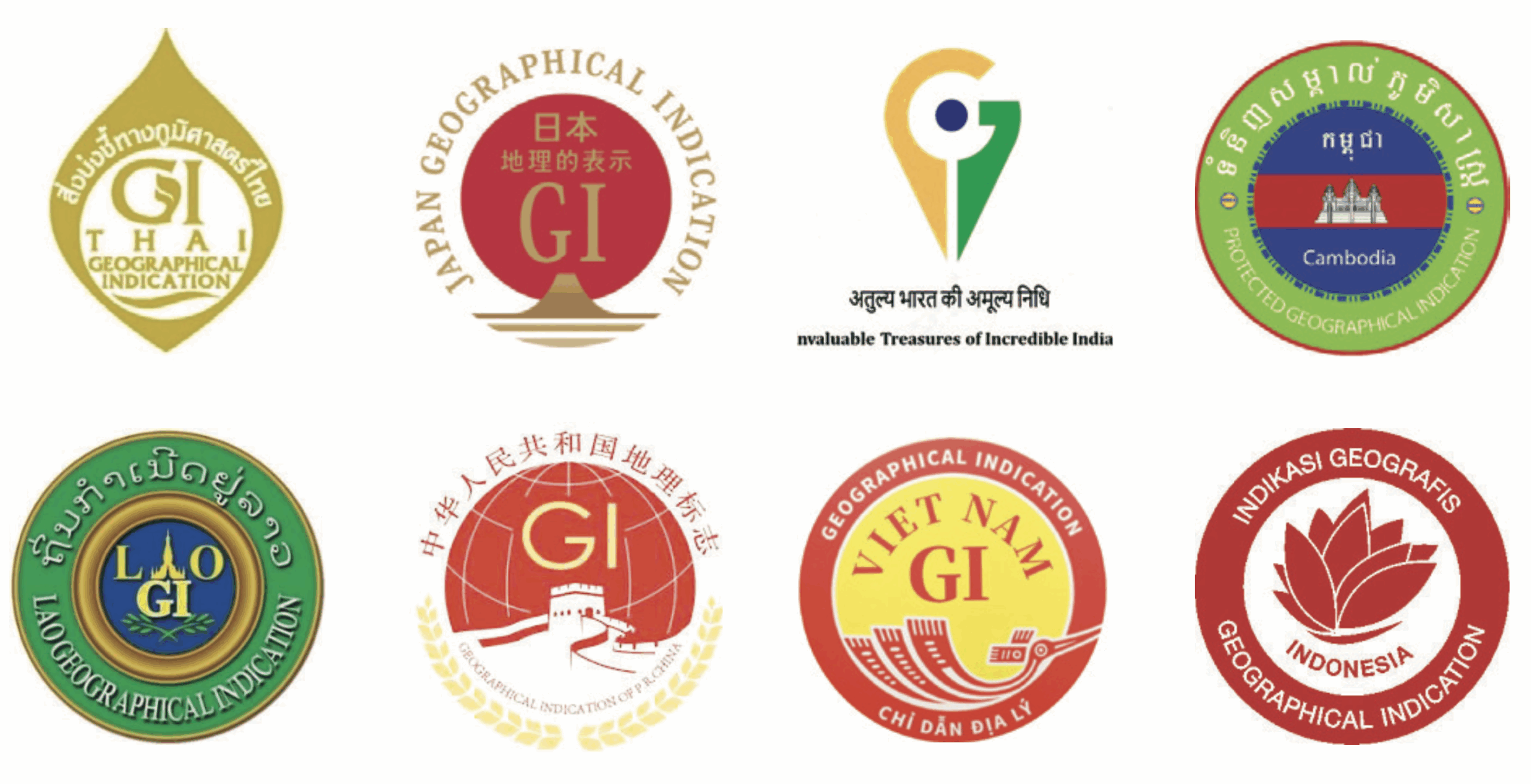Protection and Promotion of Origin-linked Products as Geographical Indications, the Asian Awakening
By Stephane Passeri — August 7 2025
4 MIN READ
This article is featured in the Magazine “Exploring Origin – The Importance of Knowing Where Food Comes From”, created in collaboration with Global Retail Brands. You can find more insights about the Magazine and additional articles here.
Geographical Indication (GI) is an intellectual property right but also a quality scheme protecting the identity of countries’ origin-linked products. These products have developed unique characteristics resulting from the optimization of interaction with the local eco-system/environment, including local biodiversity, and the use of producers’ local knowledge and cultural heritage.
Legal protection of Geographical indications – mostly referred to as “Appellation of Origin” – emerged in Europe at the beginning of the 20th Century as a tool to both protect producers against unfair competition and consumers against deception. These unfair competition and consumers’ deception were caused by the wrongful use of reputable origin-linked products’ names, often sold at a premium, due their unique characteristics/quality inherited from their place of production.
Today, Europe remains the leading region of the world both in terms of number of Geographical Indications (GI) registered for agricultural, food, wine, and spirit products and the economic turnover generated. This leadership is soon to be challenged by another part of the world; Asia. Actually, as we speak, the Asian region is already well ahead in terms of number of GI registered for non-agricultural/food products such as for handicrafts.
During the past two decades, interest in enhanced protection of GI has rapidly increased worldwide, particularly in Asia.
Often perceived originally by countries in the region as an imposed compliance requirement to join the concert of nations adhering to the principles of the World Trade Organization in general and its Trade Related Intellectual Property Rights (TRIPS) Agreement, it later materialized as an interesting tool for developed and less developed countries.
As a result, countries have increasingly put in place GI national laws and registration systems resulting in an increased number of GI (over 500 in India or among ASEAN countries alone) being already registered in the region. From Japan to Iran, Mongolia to Sri Lanka, Thailand to China, India to Indonesia, countries in the region are actively engaged in developing their national GI systems, protect, and promote national GIs domestically and internationally together with increased producers and consumer awareness on the fundamental benefits of the GI protection and GI protected products.
Some prominent examples of GIs in the region include Kampot Pepper (Cambodia), Darjeeling Tea (India), Long-Ging Tea (China), Nuoc Mam Phu Quoc (Vietnam), Doi Chaang Coffee or Isan Indigenous Thai Silk Yarns (Thailand) or Kobe Beef (Japan) as numerous countries, with different economic development situations, share the same interest in developing high-quality products related to their geographical origin, and have engaged in the identification of GI as a common tool to access the international market.
To set up their national GI system, countries often face several important challenges , such as gaps in the regulatory and institutional framework for GI application, control, and protection, coupled with the existence of fragmented value chains and a lack of support to farmers to improve the quality of their products and access attractive markets. A collective and inclusive organization representing all members of its value-chain to agree first on what the GI specifications/standards should be, and collectively own and manage the GI rights (including implementing traceability and control procedures and collective promotion of enforcement procedure to the benefit of all producers) is key for the subsequent success of a GI.
The example of Thailand
When I started working with authorities and producers in Thailand 25 years ago, as well as later on in many countries in the region, numerous challenges existed, starting with the lack of the understanding of the GI concept, the general lack of knowledge on Intellectual Property Rights at large, limited habits of collective and inclusive actions or lack of traceability and sound control mechanisms. As Thailand celebrated, in 2023, the 20th Anniversary of its national GI system, we can see what has been achieved since then. In February 2024, Thai authorities announced national GI sales amounting to 50 billion baht (US$1.39 billion) in 2023 with 60 billion baht targeted in 2024 with 20 additional GI expected to join the 200 GI currently registered in the country. This confirms GI development as a key tool to enhance the country’s competitiveness of the agricultural sector to add value to crops with geographical or cultural significance, subsequently leading to job creation and sustainable income and job generation for Thai farmers.
A prelude on what GI development could become in region?
For producers, GIs encourage diverse agricultural, food and handicraft productions. For many previously engaged solely in the commodities trade, often at their disadvantage, GI products offer a new opportunity in market diversification and segmentation as well as in generating more sustainable income to local producers and communities. They also contribute to the socio-economic dynamics in the area by enabling producers to generate and commercialize traditional products with higher premiums, focusing first on quality rather than quantity, in response to the demand of quality-conscious consumers as value-added GI products command higher market prices compared to raw commodities.
In addition, GIs are viewed to facilitate the conservation of natural resources, biodiversity and the preservation of traditions and cultural heritage, representing an important instrument for preserving local wisdom and encouraging tourism development.
For consumers, GI products appeal to upper/middle class customers, expatriates and tourists (both domestics and foreign) which enjoy both higher disposable incomes and attraction for origin-linked products in which they recognize an interest in term of “quality”, uniqueness, tradition and/or attachment to certain values (i.e. production practices, inclusiveness, promotion of biodiversity, sustainability, preservation of local wisdom and heritage. etc.) and for which they are willing to pay a premium for as long they can trust the information provided.
Knowing that the middle class in Asia is expected to represent over 60% of the world middle class in the coming decade (in comparison to less than 30%, 15 years ago) with attached implications on tourism development and tourists’ profiling, GI products can expect booming demand and valorization in Asia but also in the rest of world.
Governments have started to increasingly promote their national products’ visibility and exposure using GI products as a flagship for national excellence and identity. These labels (see examples below) are created by authorities to collectively support the visibility and promotion of national GIs.

Additionally, there are other initiatives to support the promotion, control, and protection of GIs domestically and abroad. These initiatives include international registration or bilateral agreements. The creation of GI Facebook pages (e.g., Thailand) or GI dedicated websites (e.g., Japan) is part of these efforts. Public-private partnerships with major local retailers or online selling platforms are examples of initiatives developed in the region. These initiatives aim to further support GI awareness and development.
Back to Learn & Discover Back to Market Reports





